Amazon's Arm-based Graviton2 Against AMD and Intel: Comparing Cloud Compute
by Andrei Frumusanu on March 10, 2020 8:30 AM EST- Posted in
- Servers
- CPUs
- Cloud Computing
- Amazon
- AWS
- Neoverse N1
- Graviton2
Memory Subsystem & Latency
Memory performance in server chips is absolutely crucial due to the sheer core count in the system. Amazon’s Graviton2 chip has the most modern memory capabilities of our test set thanks to 8 DDR4-3200 memory controllers, providing up to a theoretical 204GB/s peak bandwidth. What’s also important, is the SoC’s cache hierarchy and the latencies it’s able to access data at.
Looking at the linear latency graph results, let’s first focus on the DRAM region and see how the Graviton2 ends up relative to the competition.
Surprisingly enough, the Graviton2 does extremely well. Although the cache hierarchies between the designs are very different, when looking at an arbitrary 128MB memory depth, the three systems are near identical. We do see that the Graviton2’s full random latency increases at a higher rate the deeper into DRAM you compare it against the AMD and Intel systems. The structural memory latency between the Amazon and AMD chips are near identical, meaning the AMD system doing better further down in random accesses probably is due to better TLBs or page-table walkers.
Our measured 81ns structural estimate figure here almost directly matches up with Arm’s published 83ns figure from a year ago, further giving credence to Arm’s published figures from back then (Arm's figure was LMBench random using hugepages, we're accounting for TLB misses in our patterns with 4KB pages).
Turning to a logarithmical representation of the same data, we better see the difference in the cache hierarchy.
Compared to the AMD and Intel CPUs, we see the N1 cores’ advantage in the doubled 64KB L1D cache. Access latencies between the different cores should be 4 cycles, with the absolute figures in nanoseconds only differing due to the clock frequency differences between the cores.
The L2 cache of the Graviton2 falls in at 1MB and the access latency here is also competitive at 11 cycles. Arm gives the option between a 512KB 9 cycle or a 1MB 11 cycle configuration, and Amazon’s designers here chose the latter option. Halfway through the 1MB L2 cache we see the latencies of some access patterns increase, and this is due to the test exceeding the capacity of the L1 TLB which falls in at 48 pages (192KB coverage) for the N1 cores, also resulting in the big jump in the TLB miss penalty curve. AMD and Intel here go up to 64 pages and 256KB coverage. To be noted in these results is AMD’s prefetchers pulling into L2, whereas Arm and Intel cores only pull into L3 for more complex patterns.
Going beyond the L2, we reach the L3 where we’re able to test Arm’s CMN-600 mesh interconnect for the first time. The cache hierarchy covers 32MB depth; the interesting aspect here is that the latency remains relatively flat and within 2ns when testing some patterns between 3MB and 32MB, meaning there's fine-grained access hashing across the chip's slices.
The average estimate structural latency of the cache falls in at around 29.6ns, which isn’t all too great when compared to Intel’s ~18.9ns L3 cache, even considering that this is split up across 32 slices versus Intel’s 24 slices. Of course, AMD’s L3 leads here at only 10.6ns, but that’s only shared within 4 CPU cores and doesn’t go nearly as deep.
What we’re also seeing here is that the Graviton2’s N1 cores prefetchers aren’t set up to be nearly as aggressive in some more complex patterns than what we saw in its mobile Cortex-A76 siblings; it’s likely that this was done on purpose to avoid unnecessary memory traffic on the chip, as with 64 cores you’re going to be very bandwidth starved, and you don’t want to waste any of that on possible mis-prefetching.
Moving onto bandwidth testing, we’re solely looking at single-core bandwidth here.
Things are looking massively impressive for the Graviton2’s Neoverse N1 cores as a single CPU core is able to stream writes at up to 36GB/s. What interesting here is that the N1 cores like the Cortex-A76 cores here take advantage of the relaxed memory ordering of the Arm architecture to essentially behave the same as non-temporal writes would on an x86 system, and that’s why the bandwidth if flat across the whole test depth.
Loading from memory achieves up to 18.3GB/s and memory copy (flip test) achieves an impressive 29.57GB/s, which is more than double what’s achieved on the AMD system, and almost triple the Intel system. From a single-core perspective, it seems that the Arm design is able to have significantly better memory capabilities.
We’re still seeing the odd zig-zagging behaviour in the L1 and L2 caches for memory copies that we saw on mobile A76 based chips, possibly cache bank access conflicts for this particular test that showcase in Arm's new microarchitecture.
I didn’t have a proper good multi-core bandwidth test available in my toolset (going to have to write one), so fell back to Timo Bingmann’s PMBW test for some quick numbers on the memory bandwidth scaling of the Graviton2.
The AMD and Intel systems here aren’t quite representative as the test isn’t NUMA aware and that adds a bit of complexity to the matter – as mentioned, we’ll need to write a new custom tool that’s a bit more flexible and robust.
The Arm chip is quite impressive, and we only seemingly needed 8 CPU cores to saturate the write bandwidth of the system, and only 16 cores for the read bandwidth, with the highest figure reaching about 190GB/s, near the theoretical 204GB/s peak of the system, and this is only using scalar 64B accesses. Very impressive.


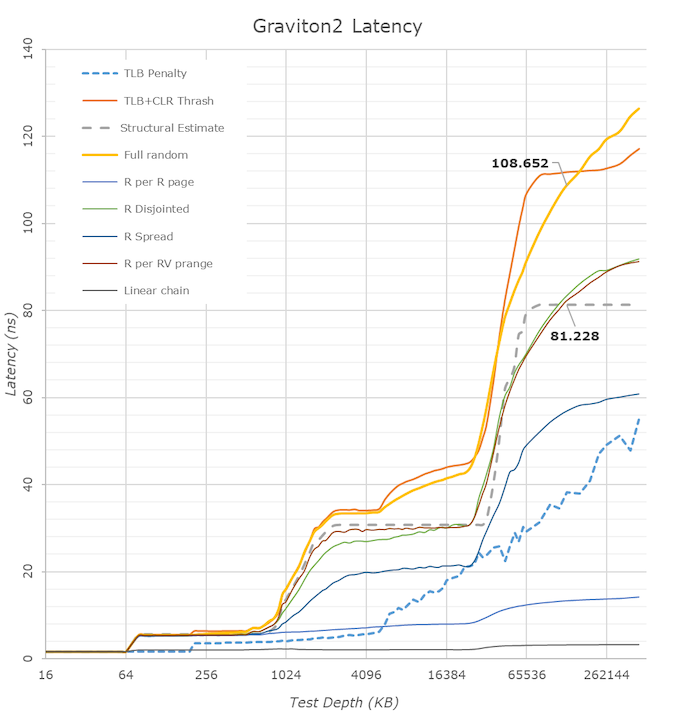
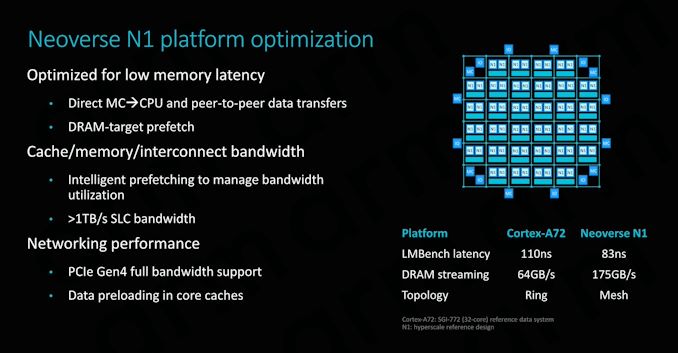
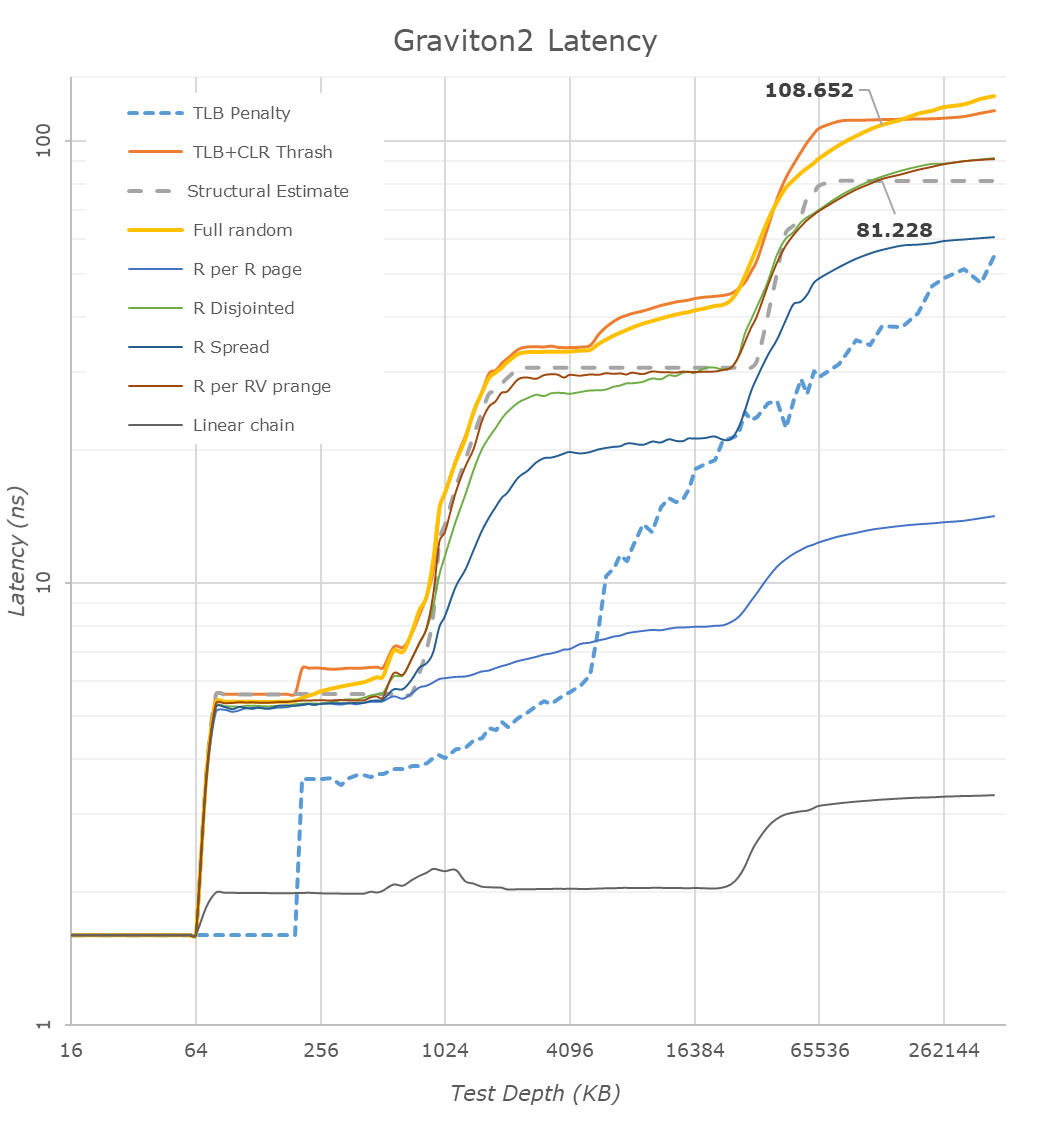
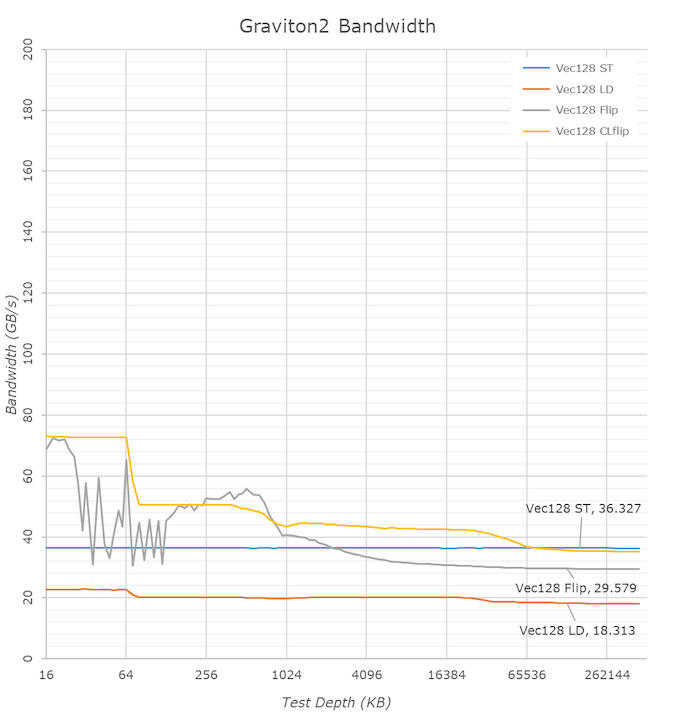
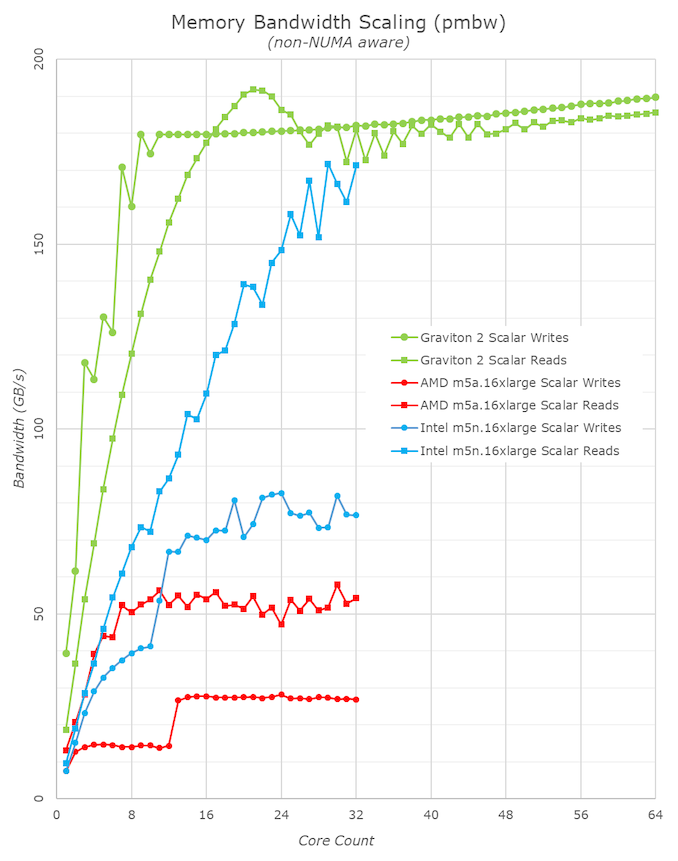








96 Comments
View All Comments
Wilco1 - Friday, March 13, 2020 - link
Developing a chip based on a standard Arm core is much cheaper. Arm chip volumes are much higher than Intel and AMD, the costs are spread out over billions of chips.ksec - Tuesday, March 10, 2020 - link
ARM's licensing comparatively speaking is extremely cheap even for their most expensive N1 Core Blueprint. The development and production cost are largely on ARM's because of the platform model. So Amazon is only really paying for the cost to Fab with TSMC, I would be surprised if those chip cost more than $300. Which is at least a few thousand less than Intel or even AMD.Amazon will have to paid for all the software cost though. Making sure all their tools, and software runs on ARM. That is very expensive in engineering cost, but paid off in long term.
extide - Friday, March 13, 2020 - link
Actual production cost is going to be more like $50 or so. WAY less than $300.ksec - Monday, March 30, 2020 - link
Only the Wafer Cost alone would be $50+ assuming 100% yield. That is excluding licensing and additional R&D. At their volume I would not be surprised it stack up to $300FunBunny2 - Tuesday, March 10, 2020 - link
"Vertical integration is powerful."I find it amusing that compute folks are reinventing the wheel from Henry Ford!! River Rouge.
mrvco - Tuesday, March 10, 2020 - link
It would be interesting to see how the AWS instances compare to performance-competitive Azure instances on a value basis.kliend - Tuesday, March 10, 2020 - link
Anecdotally, Yes. Amazon is always trying to bring in users for little/no immediate profit.skaurus - Tuesday, March 10, 2020 - link
At scale, predictability is more important in infrastructure than cost. It may seem that if we have everything we need compiled for Arm, we can just switch over. But these things often look easier in theory than practice. I'd be wary to move existing service to Arm instances, or even starting a new one when I just want to iterate fast and just be sure that underlying level doesn't have any new surprises.It will be fine If I have time to experiment, or later, when the dust settles. Right now, I doubt that switching over to these instances once they are available, is actually easy or even smart decision.
FunBunny2 - Tuesday, March 10, 2020 - link
"It may seem that if we have everything we need compiled for Arm, we can just switch over. But these things often look easier in theory than practice. "with language compliant compilers, I don't buy that argument. it can certainly be true that RISC-ier processors yield larger binaries and slower performance, but real application failure has to be due to OS mismatches. C is the universal assembler.
mm0zct - Wednesday, March 11, 2020 - link
Beware that in C struct packing is ABI dependent, if you write out a struct to disk on x86_64, and try and read it back in on Aarch64, you might have a bad time unless you use the packed pragma and use specified-width types. This is the sort of thing that might get you if you try to migrate between architectures.Also many languages (including C) have hand optimised math libraries with inline assembler, which might still be using plain-C fallbacks on other architectures. There was a good article discussing the migration to Aarch64 at Cloudflare, they particulary encountered issues with go not being optimised on Aarch64 yet https://blog.cloudflare.com/arm-takes-wing/